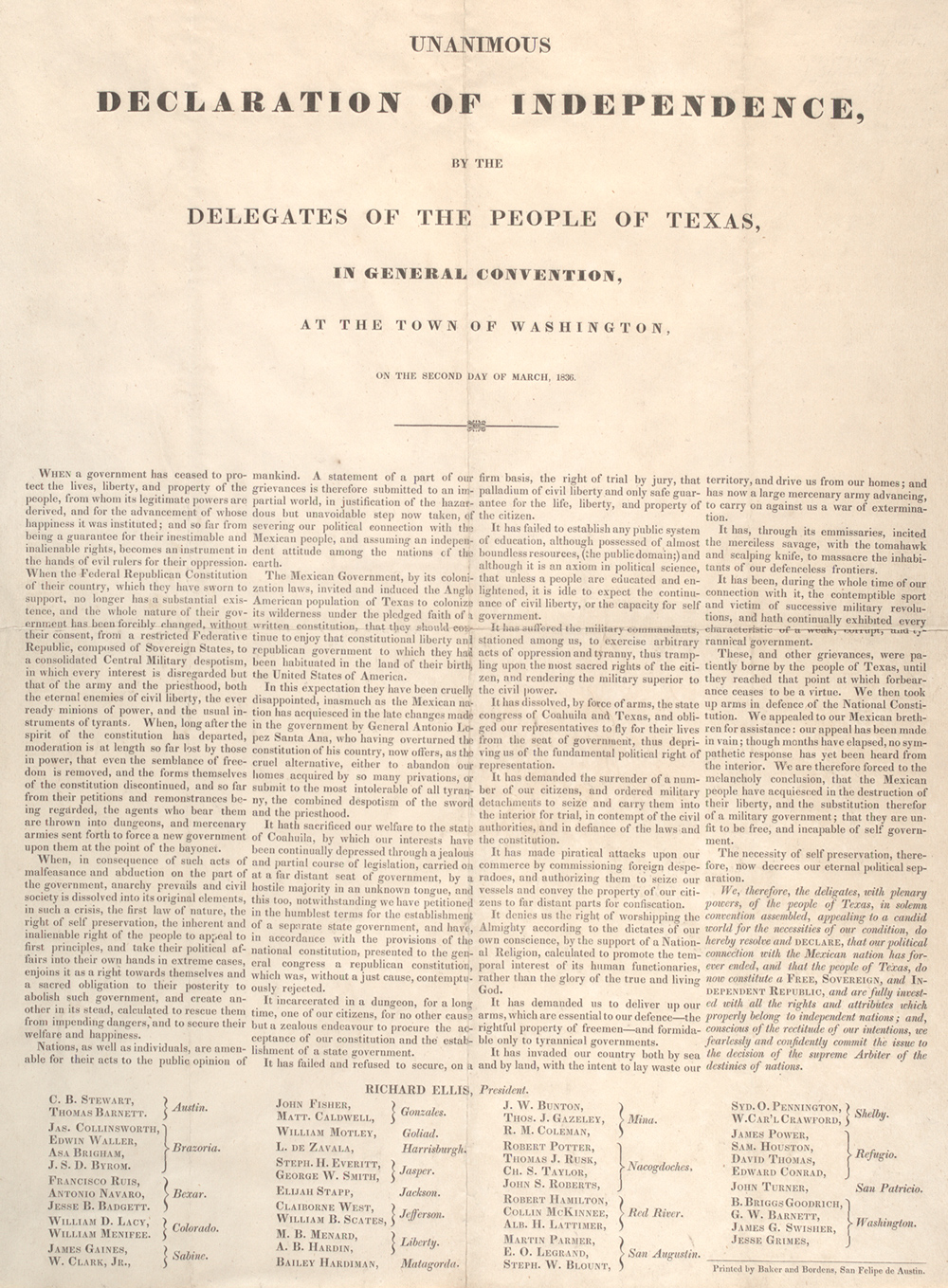On April 21, 1836, the forces of the Mexican army under General Santa Anna were handed a decisive defeat by the Texans at San Jacinto. Dressed as a common soldier, Santa Anna attempted to flee, but was taken prisoner the following day.
On May 14, Santa Anna signed two peace treaties with interim Texas president David G. Burnet. The public treaty consisted of ten articles; a second, secret treaty consisted of six additional articles. The secret agreement was to be carried out when the public treaty had been fulfilled.
The public treaty provided that hostilities would cease and that Santa Anna would withdraw his forces below the Rio Grande and not take up arms again against Texas. In addition, he also pledged to restore property that had been confiscated by the Mexicans. Both sides promised to exchange prisoners on an equal basis. The Texans would send Santa Anna back to Mexico and would not pursue the retreating Mexican troops.
In the secret agreement, the Texans agreed to release Santa Anna immediately in exchange for his pledge to use his influence to secure Mexican recognition of Texas independence. Santa Anna would not only withdraw all troops and not take up arms against Texas again, but would arrange for a favorable reception by the Mexican government of a Texas mission and a treaty of commerce. The Texas border would be the Rio Grande.
On May 26, General Vicente Filisola began withdrawing Mexican troops in fulfillment of the public treaty. However, the Texas army blocked Santa Anna's release by the Texas government. Moreover, the Mexican government refused to accept the treaties on the grounds that Santa Anna had signed them as a captive. Since the treaties had now been violated by both sides, they never took effect. Mexico was not to recognize Texas independence until the U.S.-Mexican War was settled by the Treaty of Guadalupe Hidalgo in 1848.





